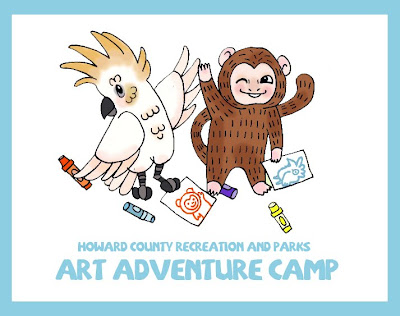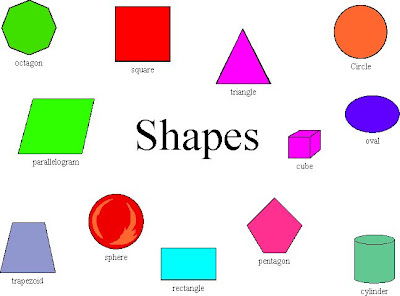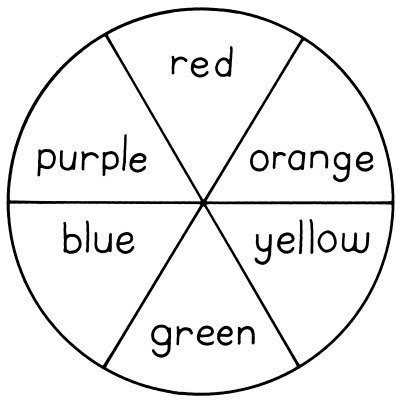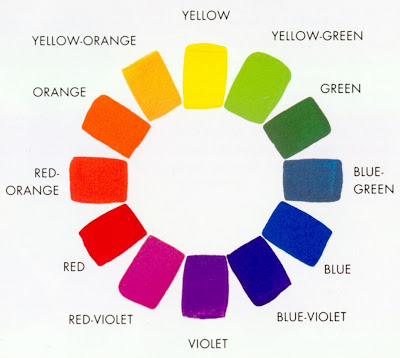
More To Come! Scroll down
Happy Thanksgiving! Here is a fun craft for you and your loved ones!
This cute paper bag turkey craft that is made out of a paper lunch bag. It is an easy craft for kids, including preschool children who will enjoy painting the stripes on the turkey. All that is needed is two brown paper lunch bags. This turkey craft will make a cute Thanksgiving day centerpiece, or it can be used as goodie bag. The body of the turkey can be filled with candy or small toys to keep the young ones amused at the Thanksgiving day table.
Things Needed:
- Two lunch size paper bags
- Scissors
- Stapler
- Tape
- Tissue paper or crumpled newspaper
- Black marker or crayon
- Paints and paintbrush
- Begin the paper bag turkey by folding the bottom part of the bag up. Then, turn the bag over.
- Next, begin to make accordion folds (about ¾ of an inch wide or so) up the rest of the bag, as shown. You can trim off any excess at the top with scissors.
- Unfold the bag, and make a vertical cut with the scissors from the top of the bag, in the center, down about 3 inches.
- Paint each stripe of the accordion folds a different autumn color (such as red, orange, yellow, brown, green). Make sure the paint the back of the bag too. Allow this to dry.
- Stuff the bottom of the bag with a bit of tissue paper or crumpled newspaper. Or, fill it with small toys or goodies. Staple the bottom of the bag with two staples on each side.
- Bring the top edges of the bag together upon themselves, and tape this together.
- Shape the turkey tail as shown. Taping the top edges together forms a triangle shape. Bring this out pointing forward, and then make the folds as appropriate to fan out the tail.
- The next step is to draw a turkey head on another paper lunch bag, and cut out the shape. By cutting through the entire lunch bag you will have two identical shapes.
- Glue the two sides of the head together, but first sandwich in a little gizzard (either cut from red paper or colored from the lunch bag paper). Also allow two tabs to hang free near the base of the neck, for gluing on to the body. Allow to dry.
- Glue on the head to the body by attaching the two tabs to the base of the lunch bag turkey body.
Brush Strokes!
How Many different brush strokes can you make?
TYPES OF LINE:
- - - - S k e t c h b o o k - - - A s s i g n m e n t - - - -

"Expressive Lines"
- Try to make as many types of lines as you can.
- Repeat each type of line several times.
- Try all types of lines: wavy, curly, jagged, dashes, fat, thin, etc.
- Fill your page with as many lines as you can.
- Teacher: assign as color or B/W.
|
Art Terms!
Achromatic
Black, white and greys. Artwork that is executed without color.
Acrylic
Thicker and stronger than tempera or watercolor paint, Acrylic is a water-based "plastic" paint.
Albumen Print
This printing process is used in photography printing processes. Egg whites are used in the emulsion.
Alternative Process
This photography term covers approximately 35 different processes for the final unconventional effect.
Armature
A structure used beneath something else for support. For example, a sculptor might create a clay sculpture with a wood or wire armature beneath it as support. Think about the frame of a house being constructed before all of the brick or siding is built on top.
Artists Proof
A small group of outstanding prints for the artists use which have been set aside from the edition prints.
Basic color principles
All color theory is based on the principle that 'color is light'.
An object that we see as red contains pigmentation which absorbs all of the colored rays of white light except the red color, which it reflects. White pigment absorbs none of the colored rays, and black absorbs all of the colors of the spectrum.
Balance
An art and design principle concerned with the arrangement of one or more elements in a work of art so that they appear symmetrical (even) or asymmetrical (uneven) in design and proportion.
Batik
Parrafin or beeswax is used to resist paint or dye on fabric or paper. Designs and patterns are produced on the unwaxed areas.
Bisque
When clay has its first firing in a kiln, it is called bisque ware. At this point, the clay has changed composition and can no longer have water added to it and turned back into a useable material.
Black
The complete absence of light. Because of impurities, you can not create black with pigments. In most black pigments, the is a slight blue trace. A black surface absorbs all light.
Brayer
In printmaking, a Brayer is a roller which is used to apply ink to printing surfaces.
Brushes
Brush styles are designated by a letter following a series number. Some basic brushes to meet your needs:
F- Flats, square edge, long bristle
B- Brights, flat, square-edged, long sable
R - Rounds, pointed bristle
L- Longs, flat, square-edge, long sable
Filberts- Flat, oval edge, long fibre
Canvas
Fabrics that are prepared for painting. Available in panels, stretched on frames, or obtained by the yard.
Ceramics
Used to describe the shaping, finishing and firing of clay.
Charcoal and Conte Crayon
In stick form, both give you a very strong, dark line. A disadvantage to these crayons is that they break easily and tend to smudge. Can be found is stick form as well.
Chop
An impression made by the artist, or by the printer seal.
Chroma
This is the intensity, or strength, or purity of a color. Squeezing paint directly from the tube to the palette is 'full chroma'.
Cibachrome
A process where a photographic print can be made directly from a color transparency.
Coil method in clay
As one of the oldest methods used in the formation of pottery, long strands of clay are laid on top of one another, joined by blending the coils together.
Collage
Collage is from the French meaning "paste up". The combination of pieces of cloth, magazines and other found objects to create artwork.
Collograph
This name is derived from the word 'collage'. It is an image built up with glue and other materials.
Color
When light is reflected off an object, color is what the eye sees. The primary colors are red, yellow and blue. The secondary colors are orange, purple and green.
Complementary Colors
Complementary colors are those which appear opposite to one another on a color wheel. The complimentary colors are red and green, blue and orange, and yellow and purple.
Composition
The arrangement of lines, colors and form.
Conte
The modern pencil lead invented by Nicolas Conte. It is a black, red or brown chalk.
Contour Drawing
Contour drawing shows the outline of the subject, and not the volume or mass of an object. Blind contour drawings are those created by looking only at the subject, and not the paper while drawing.
Contrast
Contrast is created by using opposites near or beside one another, such as a light object next to a dark object or a rough texture next to a smooth texture.
Crackle glaze
Tiny cracks in the glaze to decorate. Often rubbed in with coloring material.
Crazing
Crazing is the fine cracks that occur on the glaze.
Distemper
This painting technique involves the use of powdered colors that are mixed with glue size, or such things as egg yolk.
Dominance
Dominance is an object or color that stands out in relation to the rest of the painting.
Dry Brushing
Technique used in paintings using more pigment then water.
Dye Transfer
This is one of the most permanent color processes. This method gives maximum control of color, balance and contrast for color prints or transparencies.
Earthenware
This type of clay needs to be glazed, it is porous and not waterproof. Earthenware is a low-fire clay.
Easel
An easel is used to support your canvas while painting. Can be a collapsible tripod, studio types and as a combination sketch box unit. Some sketch boxes contain lids that serve as easels.
Edition
A group of identical prints that can be numbered and signed by the artist.
Open Edition: An unlimited number of prints
Limited Edition: Prints that have a known number of impressions, and are usually signed and numbered by the artist.
Egg Tempra
A water-base paint made with an egg yoke binder.
Elements of Art
Elements of art are the basic visual symbols found in the work such as lines, shape, form, space, point, light, motion, direction, scale, dimension, texture and color.
Encaustic
This ancient art uses colored wax for painting. This technique involves painting images onto walls with pigments that are blended with wax. When used with heat, such as an iron, the permanent color is burned into the wall, for good.
Firing
To harden clay, you have to heat it at high temperatures which fuses the clay particles.
Fixative Spray
For fixing charcoal drawing on canvas before painting. Fixative spray is available in spray cans, or for use with mouth atomizer.
Form
An element of art, such as you would see in a sculpture that has three dimensions.
Fresco
Pigment is applied directly to damp plaster making this wall painting medium one of the most permanent form of wall decoration.
Gesture Drawing
This quick drawing captures the energy and movement of the subject. It does not necessarily have to be realistic.
Glaze
Color that is thinned to a transparent state and applied over previously painted areas to modify the original color. (see also Underpainting)
Greenware
When clay is hard, but not yet fired it is referred to as greenware. The clay can be made wet and turned back into a useable material.
Gold Leaf
Used for gilding, gold or silver (for silver leafing) is beaten to extremely thin sheets.
Gouache
(Tempera)
Opaque watercolors and the technique of painting with such colors using white to make tints.
Highlight
Small areas on a painting or drawing on which reflected light is the brightest.
Hue
Hue is another word for color. The attribute which describes colors by name, i.e. red, blue, yellow etc.
Ilfochrome Classic (Cibachrome) Print
Ilfochrome Classic (Cibachrome) is indisputably the best fine art color print process available today. Its archival qualities make it suitable for gallery and museum exhibits. Image sharpness and color fidelity are unsurpassed.
Constructed on a polyester base that is durable, chemically inert and will not yellow with age.
Only pure Azo organic image forming dyes are used.
These dyes yield an image with richer color saturation and more accurate hue rendition.
This product has unexcelled archival stability, offering extremely high fade resistance and life expectancy.
Impasto
A manner of painting where the paint is laid on thickly so texture stands out in relief.
Impressionism
Impressionism is referred to as the most important art movement of the 19th century. The term impressionism came from a painting by Claude Monet. His painting was titled Impression Sunrise. Impressionism is about capturing fast fleeting moments with color, light, and surface.
Intensity
This term is used to describe the brightness, or the dullness of a color.
Intermediate colors
Obtained by mixing adjoining Primary and Secondary colors.
Kiln
Kilns can be electric, of natural gas, wood, coal, fuel oil or propane. The kiln is the furnace used to fire ceramics or metal.
Line
A line is an identifiable path of a point moving in space. It can vary in width, direction and length.
Horizontal lines run parallel such as ===
Vertical lines run up and down such as |||||
Diagonal lines are slanting lines such as \\\\\
Angled lines are a combination of diagonal lines such as /\/\/\/\/ ><<>
Curved lines are curly and express movement such as ~~~~~
Linseed Oil
Used as a medium. The tradional "binder" for oil colors.
Lithograph
This is a printing process. A small stone, or metal plate is used. The printer, usually with the artists supervision covers the plate with a sheet of paper which are then run through the printer.
Medium
The art material that is used in a work of art such as clay, paint or pencil. Describing more then one art medium is referred to as media. Any substance added to color to facilitate application or to achieve a desired effect.
Mobile
Three dimensional shapes which are suspended and free moving.
Modeling Material
Material that is formed into a shape. Most modeling materials harden when the moisture in them evaporates, such as clay. Some do not harden, such as plastecine and can be used again.
Monoprint
A print that has the same underlying common image, but different design, color or texture.
Monotype
A one of a kind print made by painting on smooth metal, creating a texture that is not possible to paint directly on paper.
Newsprint
This paper comes in large sheets, and is inexpensive. Newsprint will eventually yellow, and is not a good choice for preserving artwork. Pen and market will bleed through newsprint.
Oil Cup
A container that can be clipped to your oil palette. One cup for the medium, the other cup for the brush cleaner.
Oil Paint
A definition by Winsor & Newton state: "Oils are one of the great classic media, and have dominated painting for five hundred years. They remain popular for many reasons: their great versatility, offering the possibility of transparency and opacity in the same painting; the lack of color change when the painting dries; and ease of manipulation."
Organic
Shapes that are not regular or even, using a combination of edges that are curved or angular.
Oxidation
The firing atmosphere containing lots of oxygen.
Oxides
Applying metal oxides to the clay, mixing with water, you can create an effect of stained wood.
Paint Box
A piece of equipment used for storing brushes, paint, palette, and accessories when painting outdoors.
Painting Knife
Knives come in a variety of shapes and sizes. A trowel-type flexible knife.
Paper Mach'
Papier mach' is an ancient art consisting of paper and a binder, such as wallpaper paste or glue.
Pastel
Colors go from soft to brilliant in a stick form. When the paper is covered completely, it is known as a pastel painting. When the paper is exposed through the pastel, it is known as a pastel sketch.
Pens
Technical drawing pens produce a sharp line that never varies in width. They come in a range of colors, and widths which create different effects.
Perspective
Perspective creates the feeling of depth through the use of lines that make your image appear to be three dimentional. The closer the image is, the more detailed it will appear, and the larger it will be.
Pigment
Pigment is the material used to create the effect of color on any surface.
Pinch Pots
Beginning with a ball of clay, the artist can form a pot by pinching the clay to form the center opening.
Plaster
When mixed with water, this powder will harden into a chalk-like solid used to create sculptures, and other forms of artwork.
Porcelain
Porcelain is a combination of kaolin, silica and feldspar. You can work with porcelain as you would clay, but when you fire it correctly, the result will be similar to that of glass.
Primary colors
Red, yellow, blue.
Raku
This method of firing pottery results in irregular surfaces and colors. The pottery is removed when it is red hot. It is then placed in a bed of combustible materials and covered.
Reduction
Firing clay with an inadequate amount of oxygen.
Repetition
Repetition is created when objects, shapes, space, light, direction, lines etc. are repeated in artwork.
Rhythm
When the regular repetition of particular forms or elements occurs in a work of art, that work is said to have rhythm. It suggests motion.
Secondary colors
Orange, Violet, Green. Each color is midway between the Primaries from which it can be mixed.
Shade
Using a mixture of black mixed with a color to make it darker. The opposite of shade is tint.
Silver print
This generic term covers all prints made on paper that is coated with silver salts. Black and white photographs are usually silver prints.
Shape
Shapes can be in the form of squares, circles, triangles, rectangles, and ovals.
Slab built
Clay slabs are cut into shape, and joined together with scoring and wet clay called slip.
Slip
A liquid form of clay. Slip is used to fill in pores, and even out the color. Slip is used to join clay.
Stoneware
Sturdier then earthenware, stoneware is waterproof even without being glazed.
Spectrum
The colors that are the result of a beam of white light that is broken by a form of prism into its hues.
Stencil
The process in which an area is cut out of paper, or material such as cardboard to enable paint or ink to be applied to a piece of paper, or canvas through the cutout.
Symbol
A symbol is a picture or image that tells a story of what it is without using words.
Symmetry
Symmetry is when one side of something balances out the other side.
Terra cotta
Commonly used for ceramic sculpture, it is a brownish-orange earthenware clay.
Tempera
Tempera is a word used to describe any type of binder such as oil, water or egg that makes a pigment workable as a paint form.
Tertiary colors
Colors that represent a mixture of secondary colors.
Texture
Texture creates the feeling of an object.
Tint
Tint is the opposite of shade. Tinting is combining white with a color to make it lighter.
Turpentine (or Grumtine)
Used for cleaning equipment and to thin mediums.
Underpainting
Preliminary painting used as a base for textures or for subsequent painting or glazing.
Unity
A feeling of completeness is created by the use of elements in the artwork.
Value
Shadows, darkness, contrasts and light are all values in artwork.
Vintage
A photograph printed within a few years of the negative being made.
Wash
A highly fluid application of color.
Watercolour
A translucent, water-based paint that comes in cake or tube form.
Wax Crayon
These crayons are ideal to use to loosen up your drawing style. Crayons are cost effective, and it is difficult to create really detailed drawings.
Wheel Thrown
Comes from an English term meaning 'spin'. The clay is placed on the potters wheel and the piece is formed while the clay spins on the wheel.
* * * * * * * * * * * * * * * * * * * * * * * * * * * * * * * * * * * * * * * *
Shapes: "Shapes are everywhere!" Picasso says, "you just have to know where to look!"
1.Can you copy the shapes?
2.Which of these shapes do you see around your house?
3. How many sides does each shape have?
4. How many shapes can you draw that you found in your home?

Color: "I love all the colors!" sings Frida. " All the colors are made from just three colors, called the primary colors: RED YELLOW and BLUE!"
When you mix them together you get 3 new colors, these are called the secondary colors!
These are Purple, Orange and Green!
1. Can you color in the color wheel?
2. What two colors make Green Purple and Orange??
3. How many colors can you mix?
4. How many Primary and Secondary colors can you find in your house?


Here is a 2 minute story the campers will enjoy. (After the story is over scroll down further to see questions and a mini art game about the tale!)
Questions about the story:
1.Can you draw a tiger? ( If you draw one and bring it into HCRP Art Adventure camp, you will get a special surprise from Picasso!)
2.What two colors make orange?
3. What other animals did you see in the story?
4. Can you draw one of the animals seen in the story besides the tiger?
